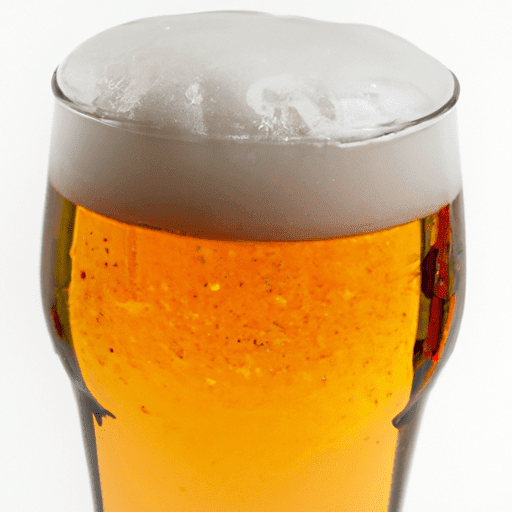Light Beer: A Refreshing and Versatile Ingredient in the Kitchen
When it comes to cooking and enjoying a refreshing beverage, light beer often takes center stage. With its lower alcohol content and milder flavor, light beer offers a multitude of possibilities in the culinary world. In this blog post, we’ll dive into the wonderful world of light beer, exploring its taste, common uses in cooking, nutritional value, and a sprinkle of interesting history and facts. So, grab a cold one and join us on this flavorful journey!
Light Beer: A Delicate Balance of Flavor
Light beers are renowned for their crisp and mild flavors. Unlike their heavier counterparts, they offer a lighter-bodied and less bitter taste that appeals to a wide range of palates. With subtle hints of malt, hops, and grains, light beer creates an ideal base for adding depth and character to your dishes.
A Dash of Beer Magic: Common Uses in Cooking
Beer-Battered Delights: Light beer’s effervescence and carbonation make it an excellent choice for beer-battered goodies. Whether you’re frying up crispy onion rings or coating fish for fish tacos, the bubbles in light beer lend a lightness and airy texture to your batters, resulting in a crispy and golden finish.
Marinades and Braising: When used as a marinade, light beer can work wonders in tenderizing and infusing meat with flavor. Whether you’re grilling chicken or slow-cooking beef, the subtle flavors of the beer will penetrate the meat, leaving it moist and succulent. Additionally, light beer can be used as a braising liquid, contributing to the development of rich and savory flavors.
Steaming and Boiling: For a unique twist, try using light beer instead of water when steaming or boiling seafood, such as clams or mussels. The beer will infuse the shellfish with its delicate flavors, adding a depth of taste that elevates your dish to new heights.
Deglazing and Sauces: Light beer can be a flavorful alternative to wine when deglazing pans or creating sauces. The malty notes of the beer bring complexity to the dish, pairing well with meats, mushrooms, and caramelized vegetables. Be it a hearty stew or a rich gravy, light beer can enhance the overall taste profile.
Nutritional Value: Light on Calories, Heavy on Enjoyment
Apart from being refreshing, light beer has gained popularity for its lower calorie content compared to regular beer. While the exact nutritional value may vary between brands, light beers generally contain fewer carbohydrates and alcohol. This makes them a suitable choice for those seeking a lighter option, especially when used in moderation.
A Sip Through History: Fascinating Facts about Light Beer
Origins: Light beer emerged in the United States during the late 1960s as a response to the growing demand for lower-calorie brews. The first commercially successful light beer was introduced by Miller Brewing Company in 1973, named “Miller Lite.”
Brewing Process: Light beer achieves its lower calorie content by using a combination of specific ingredients, altered brewing techniques, and a shorter fermentation period. This process leads to a lighter body and reduced residual sugar in the final product.
Trends and Varieties: Over the years, light beer has evolved to accommodate various preferences and trends. Today, you can find an array of light beer options, including light lagers, pale ales, and even light versions of craft beer.
Food Pairing: Light beer pairs well with a wide range of dishes. Its subtle flavors and lighter body make it a versatile companion for everything from spicy foods to grilled meats, seafood, and even desserts like beer-infused cakes or pies.
So, the next time you’re looking to elevate your culinary creations, don’t forget to incorporate light beer. With its mild flavors and diverse uses, it’s a must-have ingredient in any adventurous cook’s pantry. So go ahead, experiment, and savor the delightful possibilities that light beer brings to your kitchen!
PS: Remember to always drink responsibly and ensure any alcohol used in cooking is appropriate for your audience.
Origin:
Lite beer, also known as light beer, originated in the United States in the 1960s. It was created in response to growing consumer demand for a lower-calorie and lower-alcohol beer option.
Common Uses:
Lite beer is commonly consumed as a beverage on its own, especially during social gatherings, sporting events, and in bars and pubs. It is also used as an ingredient in various beer-based cocktails and as a cooking ingredient in recipes such as beer-battered dishes and beer-infused marinades.
Nutritional Benefits:
Lite beer typically contains fewer calories and a lower alcohol content compared to regular beer. The exact nutritional content can vary depending on the brand, but in general, lite beer contains fewer carbohydrates, less fat, and fewer calories per serving compared to regular beer.
Unique Properties and Historical Significance:
- The introduction of lite beer to the market was a significant development in the beer industry, as it created a new product category that appealed to health-conscious consumers.
- The use of adjunct grains, such as corn or rice, in the brewing process is more common in lite beer production. This helps lower the calorie and carbohydrate content, resulting in a lighter, less filling beer.
- Lite beer gained widespread popularity and became a dominant segment in the beer market due to its approachable taste and relatively lower calorie content. It continues to be a popular choice for those seeking a lighter beer option.
- Lite beer is often marketed as an alternative to regular beer for individuals who are watching their calorie intake or prefer a lighter flavor, while still allowing them to enjoy beer in moderation.
Remember to consume alcohol responsibly and in moderation.




Use the share button below if you liked it.
It makes me smile, when I see it.